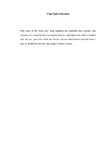Diffuse Minewater Pollution: Quantification and Risk Assessment in the Tamar Catchment
| dc.contributor.supervisor | Braungardt, Charlotte | |
| dc.contributor.author | Turner, Alison Jean May | |
| dc.contributor.author | ||
| dc.contributor.author | ||
| dc.contributor.other | School of Geography, Earth and Environmental Science | en_US |
| dc.date.accessioned | 2011-12-01T15:43:34Z | |
| dc.date.available | 2011-12-01T15:43:34Z | |
| dc.date.issued | 2011 | |
| dc.date.issued | 2011 | |
| dc.identifier | 21081420 | en_US |
| dc.identifier.uri | http://hdl.handle.net/10026.1/891 | |
| dc.description | Merged with duplicate record: 10026.1/2901 on 01.02.2017 by CS (TIS) | |
| dc.description.abstract |
Abandoned metal mines in the Tamar catchment, south west England, represent a significant threat to surface water quality via generation of acid mine waters. Currently the River Tamar fails environmental quality standards (EQS) established under the Water Framework Directive (2000/60/EC) for dissolved Cu (x ̅ = 0.19 ± 0.05 μmol L-1) and Zn (x ̅ = 0.19 ± 0.06 μmol L-1, both 1997-2007) downstream of historic mining area of Gunnislake. The aim of this study was to quantify the risk to surface water quality by diffuse drainage generated by mine waste tips. For the first time, a GIS model was compiled and used to generate a priority list of known areas of mine waste, based on physical and environmental factors. The methodology was consistent with European guidance documentation published to meet the requirements of the Mining Waste Directive (2001/21/EC) and has since been applied, in a modified form, to other catchments in south west England. Two study sites, with contrasting mineralogy and hydrology, scored highly in the model and were the subject of field investigations from 2007-2009. These were Devon Great Consols (DGC), an abandoned Cu-As mine near Gunnislake and Wheal Betsy (WB), an abandoned Pb-Ag mine, near Mary Tavy. At each site, surface waters and shallow groundwaters were sampled and analysed for dissolved metals (including Al, Cu, Zn, Mn, Pb, Ni, and Cd), metalloids (As, Sb), major ions and anions. Samples of four selected mine waste tips were also gathered and subjected to a range of laboratory leaching experiments including the novel application of a dynamic upflow percolation test, based on an existing European method (CEN TS 14405). Leachates generated by the waste tips in the field were highly variable and elevated with respect to EQS for Al (up to 1850 μmol L-1), Cu (570 μmol L-1), Zn (34 μmol L-1), Ni (3.8 μmol L-1), Cd (0.17 μmol L-1), Mn (216 μmol L-1), Fe(537 μmol L-1) , As (380 μmol L-1) and Sb (5.4 μmol L-1). Estimated annual fluxes of dissolved metals were predicted using average rainfall data and catchment areas calculated in ArcHydro9 to estimate the annual discharge of waters from the tip. These calculations showed annual contaminant flux from the tips to exceed, or be of the same order of magnitude to, major adit discharges in the catchment (e.g. Cu 50900-66900 mol y-1 at DGC and 470 mol y-1 Cd at WB) and represented a significant contributor to metal flux in the Tamar catchment. Primary sulphide minerals in the waste were generally highly altered and metals (Pb, Cu, Zn, and Mn) and As were found to be strongly associated with secondary iron minerals, precipitated under oxic conditions. In finer wastes, sorption to clay minerals was also found to be very important for the retention of dissolved metals, particularly Pb. Concentrations of contaminants in column field leachates were similar for most metals (Cu, Zn, Mn, Ni and Cd) and may provide a useful tool for prediction of leachate composition. However, sorption and release of metals and As to the secondary phases and clays were highly sensitive to pH change and where laboratory experiments did not replicate field pH, discrepancies between in situ and laboratory results were observed up to two orders of magnitude in scale (particularly for As and Pb). | en_US |
| dc.description.sponsorship | Great Western Research, Environment Agency, University of Exeter | en_US |
| dc.language.iso | en | en_US |
| dc.publisher | University of Plymouth | en_US |
| dc.subject | Acid Mine Drainage | en_US |
| dc.subject | Geochemistry | en_US |
| dc.subject | GIS | en_US |
| dc.subject | Environmental Risk Assessment | en_US |
| dc.subject | Tamar Catchment | en_US |
| dc.subject | Mine Waste | en_US |
| dc.subject | Water Pollution | en_US |
| dc.title | Diffuse Minewater Pollution: Quantification and Risk Assessment in the Tamar Catchment | en_US |
| dc.type | Thesis | |
| dc.identifier.doi | http://dx.doi.org/10.24382/3961 |
Files in this item
This item appears in the following Collection(s)
-
01 Research Theses Main Collection
Research Theses Main


